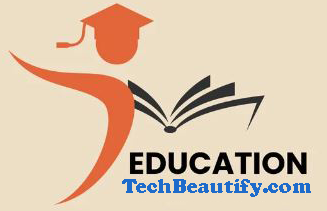Major Educational Reforms Announced This Year: What You Need to Know
Outline
- Introduction
- Brief overview of the importance of educational reforms
- Purpose of the article
- Understanding Educational Reforms
- Definition and significance
- Historical context of educational reforms
- Key Reforms Announced This Year
- Overview of major changes
- Goals of the new reforms
- Curriculum Overhaul
- Changes in curriculum structure
- Inclusion of new subjects and skills
- Emphasis on STEM Education
- Expansion of STEM programs
- Integration of technology in learning
- Focus on Humanities and Arts
- Balanced curriculum with arts and humanities
- Benefits of a well-rounded education
- Teacher Training and Development
- New standards for teacher qualifications
- Continuous professional development
- Digital Literacy and E-Learning
- Adoption of digital tools in classrooms
- Online learning platforms and resources
- Personalized Learning Approaches
- Tailored education plans for students
- Use of data to track and enhance student performance
- Inclusive Education Policies
- Support for students with disabilities
- Initiatives for marginalized communities
- Mental Health and Well-being
- Programs addressing student mental health
- Importance of emotional and psychological support
- Extracurricular Activities
- Enhancing student engagement through extracurriculars
- Funding and resources for activities
- Assessment and Evaluation Changes
- Shift from traditional exams to continuous assessment
- Impact on student learning and development
- Challenges and Criticisms
- Potential obstacles to implementing reforms
- Voices of opposition and their concerns
- Conclusion
- Summary of the key points
- The future outlook of education with these reforms
- FAQs
- What are the main goals of the educational reforms announced this year?
- How will the new curriculum changes impact students?
- What support is available for teachers with the new reforms?
- How do these reforms address digital literacy?
- What measures are being taken to ensure inclusive education?
Major Educational Reforms Announced This Year: What You Need to Know
Introduction
Education is the backbone of a thriving society. It’s the bedrock upon which future generations build their knowledge, skills, and values. Every so often, educational systems undergo significant reforms to adapt to changing societal needs and technological advancements. This year, major educational reforms have been announced, aiming to transform the landscape of learning. In this article, we’ll delve into these changes, what they mean for students, teachers, and the broader community, and how they aim to shape the future of education.
Understanding Educational Reforms
Educational reforms refer to the planned changes and improvements in educational policies, practices, and structures. These reforms are crucial because they strive to enhance the quality of education, making it more relevant and accessible. Historically, educational reforms have played a pivotal role in shaping modern education systems. From the introduction of compulsory education to the integration of digital learning tools, each reform wave has sought to address existing gaps and prepare students for the future.
Key Reforms Announced This Year
This year has seen the unveiling of several groundbreaking educational reforms. These changes are designed to modernize the education system, focusing on various aspects like curriculum updates, teacher training, and inclusive policies. The primary goal is to create an educational environment that nurtures critical thinking, creativity, and lifelong learning.
Curriculum Overhaul
One of the most significant changes is the curriculum overhaul. The new curriculum aims to be more holistic, integrating various subjects and skills that are essential in today’s world.
Emphasis on STEM Education
STEM (Science, Technology, Engineering, and Mathematics) education has been given a substantial boost. The expansion of STEM programs includes enhanced resources and facilities, ensuring students are well-equipped to pursue careers in these fields. Additionally, there’s a strong focus on integrating technology in learning, from coding classes in primary schools to advanced robotics in higher education.
Focus on Humanities and Arts
While STEM is crucial, the new reforms recognize the importance of a balanced education. Humanities and arts have been given equal importance, ensuring students receive a well-rounded education. This balanced approach helps foster creativity and critical thinking, skills that are invaluable in any career.
Teacher Training and Development
Teachers are the cornerstone of any educational system. The new reforms include stringent standards for teacher qualifications and emphasize continuous professional development. This ensures that teachers are not only well-versed in their subjects but also equipped with modern teaching techniques.
Digital Literacy and E-Learning
In today’s digital age, digital literacy is non-negotiable. The reforms promote the adoption of digital tools in classrooms, encouraging both teachers and students to become proficient with technology. E-learning platforms have been introduced, offering a plethora of resources and interactive learning experiences.
Personalized Learning Approaches
Every student is unique, and the new reforms acknowledge this by promoting personalized learning. Tailored education plans are created to cater to the individual needs of students, ensuring that each learner can thrive. Data is used extensively to track progress and identify areas that need improvement.
Inclusive Education Policies
Inclusivity is at the heart of the new educational reforms. Efforts are being made to support students with disabilities and those from marginalized communities.
Mental Health and Well-being
Student well-being is crucial for effective learning. The reforms include comprehensive programs addressing mental health, providing students with the necessary emotional and psychological support.
Extracurricular Activities
Extracurricular activities are essential for holistic development. The new reforms ensure that there is adequate funding and resources for these activities, helping students engage in sports, arts, and other interests beyond academics.
Assessment and Evaluation Changes
Traditional exams are making way for continuous assessment methods. This shift aims to provide a more accurate reflection of a student’s abilities and progress, reducing the pressure and stress associated with one-time exams.
Challenges and Criticisms
Implementing these reforms is not without challenges. Potential obstacles include budget constraints, resistance from traditionalists, and the logistical issues of overhauling existing systems. Critics argue that some changes may be too ambitious or overlook certain practicalities. However, these criticisms also provide valuable feedback for refining and improving the reforms.
Conclusion
The educational reforms announced this year represent a bold step towards a more dynamic, inclusive, and effective education system. By embracing new technologies, focusing on holistic development, and promoting inclusivity, these reforms aim to prepare students for the challenges and opportunities of the future. While there are challenges to be addressed, the overall outlook is positive, promising a brighter and more equitable future for education.
FAQs
What are the main goals of the educational reforms announced this year?
The main goals are to modernize the education system, promote digital literacy, ensure inclusivity, and provide a balanced and holistic curriculum that prepares students for future challenges.
How will the new curriculum changes impact students?
The new curriculum aims to provide a more comprehensive education, emphasizing both STEM and the humanities. This balanced approach helps students develop critical thinking, creativity, and practical skills.
What support is available for teachers with the new reforms?
The reforms include stringent standards for teacher qualifications and emphasize continuous professional development, ensuring teachers are equipped with modern teaching techniques and subject knowledge.
How do these reforms address digital literacy?
Digital literacy is a key focus, with reforms promoting the use of digital tools in classrooms and encouraging both teachers and students to become proficient with technology. E-learning platforms and resources are also being introduced.
What measures are being taken to ensure inclusive education?
The reforms include policies to support students with disabilities and those from marginalized communities. Programs addressing mental health and well-being are also being implemented to provide comprehensive support to all students.

